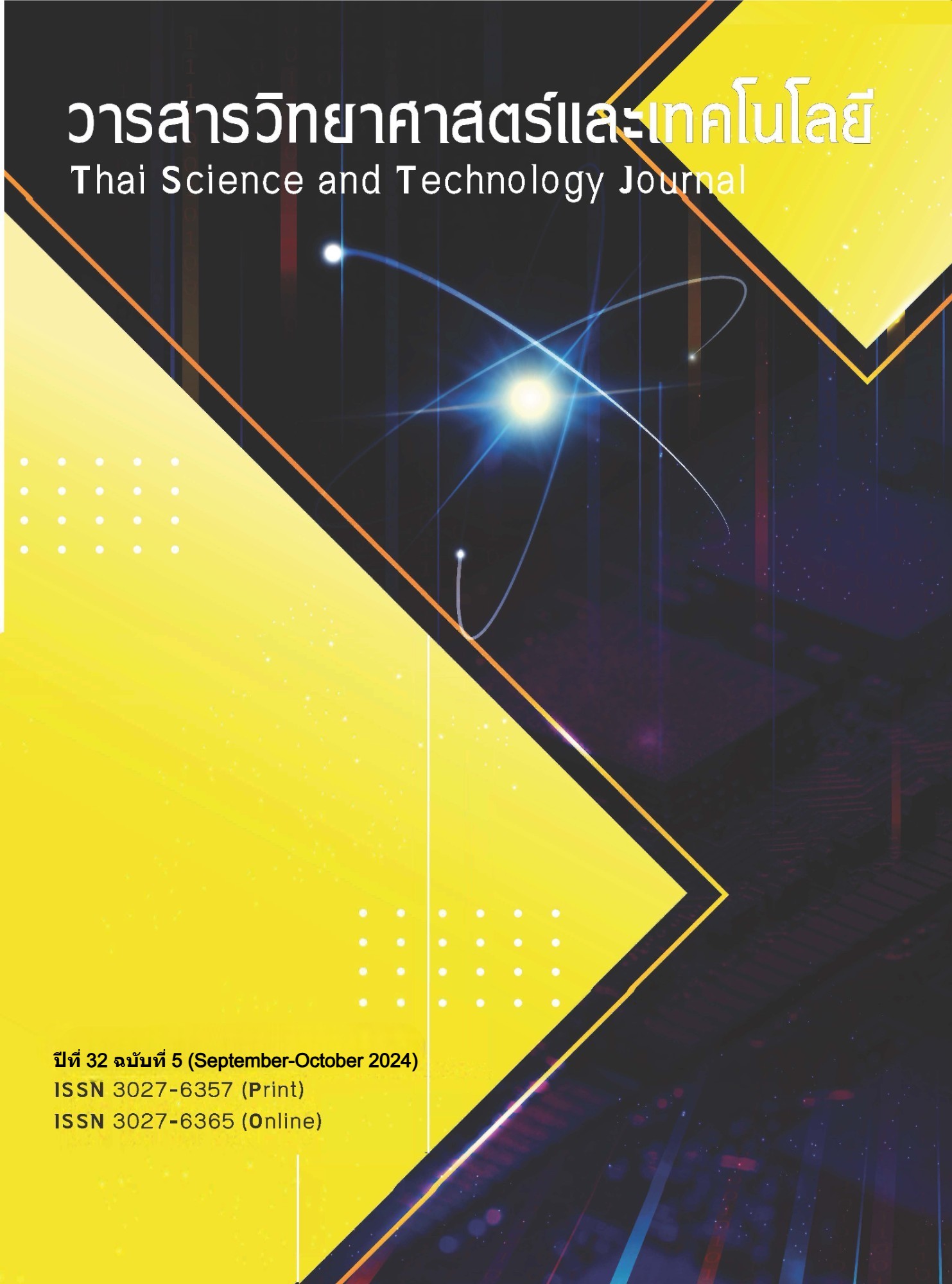Deacidification of Papers by Calcium Oxide Nanoparticles
Main Article Content
Abstract
In this study, nano calcium oxide was employed as a deacidification agent for paper. The synthesized calcium oxide nanoparticles have an average size of 16.23 ± 2.1 nm and disperse effectively inanisopropanol medium.Their basic strength, determined using the Hammett indicator, falls within the rangeof 9.3 < H < 15.0. The deacidification process involved immersing the paper in acolloid ofnanocalcium oxide.Scanningelectron microscopy wasutilized toexaminethe distribution of nanoparticles on the paper. The acid reduction capacity was assessed by measuring the degree of polymerization and the percentage of cellulose depolymerization under various experimental conditions. Under controlled conditions, where the paper was treated with calcium oxide nanoparticles, depolymerization decreased by approximately 5-10 percent afterexposuretoanitric acid solution at pH 1 and 3 for 10 minutes, followed by heating at 120 °C for 30 minutes.
Article Details
References
Baty, J. W., Maitland C., Minter W., Hubbe, M., (2010). Deacidification for the conservation and preservation of paper-based works: A review. Bioresources, 5(3), 1955-2023.
Hubbe, M. A., Smith, R. D., Zou, X., Katuscak, S., Potthast, A., and Ahn, K. (2017). "Deacidification of acidic books and paper by means of non-aqueous dispersions of alkaline particles: A review focusing on completeness of the reaction. BioRes., 12(2), 4410-4477.
Carter, Henry A. (1997). The Chemistry of Paper Preservation: Part 4. Alkaline Paper. Journal of Chemical Education, 74(5), 508–511.
Khaled, M. Saoud, Shaukat Saeed, Rola Al Soubaihi, Ayman Samara, Imen Ibala, Dana El Ladki and Omar Ezzeldeen. (2018). Application of Mg(OH)2 nanosheets for conservation and restoration of precious documents and cultural archives. BioResources, 13(2), 3259-3274.
Tsvetanska, I., Lasheva, V., Todorova, D., Yavorov,N., Ivanova K., (2022). Deacidification in the protection of written collections. International Scientific Journal "Innovation", 1, 32-35.
Ramin, M., Andres, H., Blüher, A., Reist, M., and Wälchli, M. (2009). Paper de-acidification – A comparative study, J. Paper Conservation. 10(3), 17-25.
Giorgi R, Dei L, Ceccato M, Schettino C, Baglioni P. (2002). Nanotechnologies for conservation of cultural heritage: paper and canvas deacidifcation. Langmuir, 18(8), 198–203.
Giorgi, R., Dei, L., Ceccato, M., Schettino, C., Baglioni, P., (2002). Nanotechnologies for conservation of cultural heritage: Paper and canvas deacidification. Langmuir 18(21), 8198- 8203.
Giorgi R, Bozzi C, Dei L. Gabbiani, C., Ninhan, B. W., Baglioni, P. (2005). Nanoparticles of Mg(OH)2: synthesis and application to paper conservation. Langmuir, 21, 8495–8501
Giorgi R, Chelazzi D, Fratini E., Langer, S., Niklasson, A., Rademar, M., Svensson, J. E., Baglioni, P. (2009). Nanoparticles of calcium hydroxide for wood deacidification: decreasing the emissions of organic acid vapors in church organ environments. J Cult Herit, 10, 206–213.
Wójciak, A. (2016). Deacidification of paper with Mg(OH)2 nanoparticles: the Impact of dosage on process effectiveness, Wood research, 61(6), 937-950.
Malešič, J., Kadivec, M., Kunaver, M., Skalar, T., Cigić, I., K., (2019). Nano calcium carbonate versus nano calcium hydroxide in alcohols as a deacidifcation medium for lignocellulosic paper, Heritage science, 7:50, doi: 10.1186/s40494-019-0294-6.
Sequeiraa, S., Casanovab C., Cabritac E. J. (2006). Deacidification of paper using dispersions of Ca(OH)2 nanoparticles in isopropanol. Study of efficiency. Journal of Cultural Heritage. 7: 264–272.
Carlos R., Amelia, S. Encarnacion, R. (2013). Alcohol Dispersions of Calcium Hydroxide Nanoparticles for Stone Conservation. Langmuir, 29(36), 11457–11470. doi:10.1021/la4017728
Kouzu, M., Kasuno T., Tajika M., Sugimoto Y., Yamanaka S. and Hidaka J. (2008). Calcium oxide as a solid base catalyst for transesterification of soybean oil and its application to biodiesel production, Fuel, 87, 2798-2806.
Carlos, R., Irene, V., Encarnacion, R. (2016). Kinetics and mechanism of calcium hydroxide conversion into calcium alkoxides: Implications in heritage conservation using nanolimes. Langmuir, 6b01065–. doi: 10.1021/acs.langmuir.6b01065
Poggi, G., Toccafondi, N., Melita, L. N., Knowles, J. C. (2014) Calcium hydroxide nanoparticles for the conservation of Cultural Heritage: new formulations for the deacidification of cellulose-based artifacts. Appl Phys A, 114, 685–693
Emmanuel, S., Coatas, P. (2007). Protection of Lignocellulosic and Cellulosic Paper by Deacidification with Dispersions of Micro- and Nanoparticles of Ca(OH)2 and Mg(OH)2 in Alcohols. Restaurator, 28(3), doi: 10.1515/rest.2007.185


